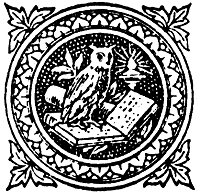Marginalia
Home
About Marginalia
Current Issue
Archived Issues
Notes to Contributors
Links to Other Online Journals
Marginalia -- The Website of the MRG
Le Morte Darthur: The Seventh and Eighth Tales.
Edited, with Introduction and Notes, by P. J. C. Field.
304 Pages. Indianapolis: Hackett, 2008.
£8.95 (Paperback) ISBN-13: 978-0-87220-946-6
Unlike other standard teaching texts, such as Helen Cooper's slightly abridged version of Le Morte Darthur (Oxford University Press, 1998 and 2008) and Derek Brewer's classic edition of Tales VII and VIII (York Medieval Texts, 1968), Field's does not modernize Malory's spelling, instead catering to those readers who wish to tackle Malory's language in its unadulterated form. Some difficult words and phrases are glossed at the foot of each page, with a further glossary appended to the text. The wide-ranging Introduction illuminates such matters as Malory's society, sources, style, themes and ideals. The treatment of these historical, cultural, and literary contexts is learned and authoritative; perhaps the Introduction's only limitation consists in being occasionally too authoritative. Aims of accessibility and concision, while admirably achieved here, would not necessarily have been compromised had the author gestured towards the existence of ongoing critical debate surrounding mentioned issues such as a posited direct source for Malory's Tale of Sir Gareth (p. lviii) and unmentioned ones such as the unity of Malory's work(s). Avenues for further enquiry are, however, suggested in the judiciously selected suggestions for further reading that close the volume.
The extensive Commentary, again displaying a compendious knowledge of Malory's linguistic, literary, and historical make-up, provides further insights into how Malory composed his work and how a contemporary reader may have approached the results. One recurring feature of the Commentary is Field's meticulous probing of Malory's repeated references to 'the (Freynshe) booke'. It is well known that this 'source attribution' is usually spurious, as the French Arthurian cycles are perhaps least likely to correspond with Le Morte Darthur where Malory explicitly claims they do. Field's exposure of the ways in which these divergences highlight some of Malory's most independent authorial moments is even more comprehensive than that of Vinaver's Commentary (The Works of Sir Thomas Malory, 3rd ed., ed. Eugene Vinaver and rev. P. J. C. Field, Oxford, 1990). In this, as in other components of its ancillary material, Field's edition serves as a useful reference for both scholar and student interested in exploring what makes Malory's work distinctive.
Packaged in a stylishly sombre cover featuring Arthur Rackham's evocative 1917 illustration, How Mordred Was Slain by Arthur, and How by Him Arthur Was Hurt to the Death, P. J. C. Field's updated edition helps readers get their bearings on Malory studies both inside and out. For those who lack the leisure to read Le Morte Darthur in its entirety, this volume offers a valuable orientation to its understanding and appreciation.
Megan Leitch, University of Cambridge
 Contents |
© 2004 The authors and the Medieval Reading Group at the University of Cambridge
No material may be reproduced without written authority.
Last modified on .
Marginalia -- MRG Website::Contact Us::About Us::Credits and Thanks::Search::Archives

